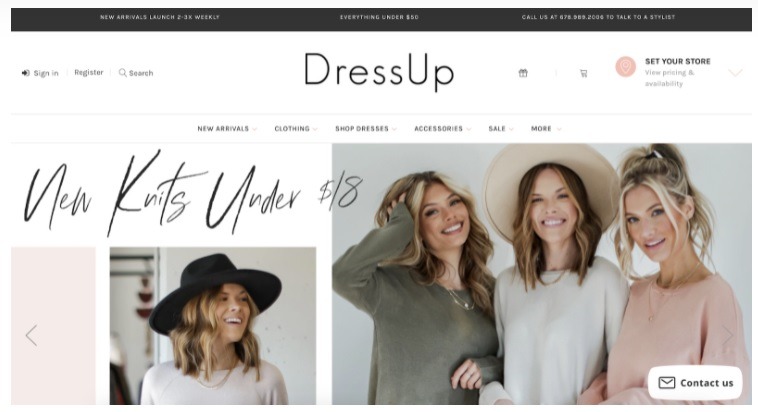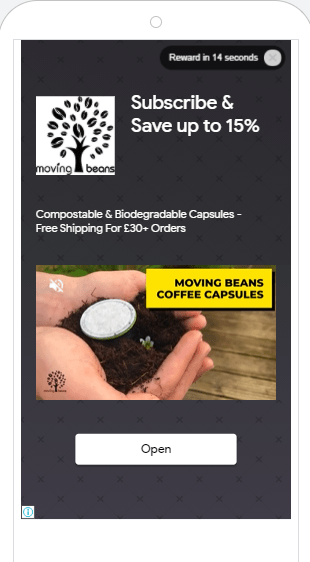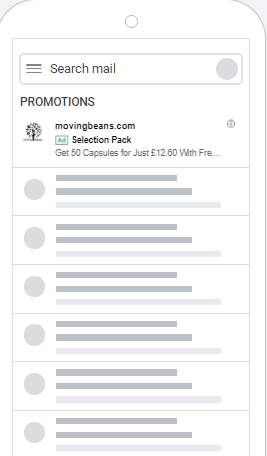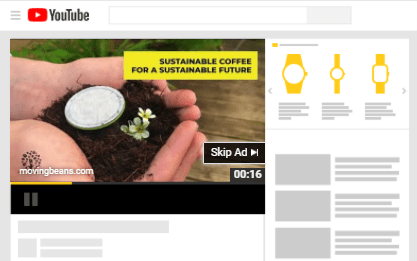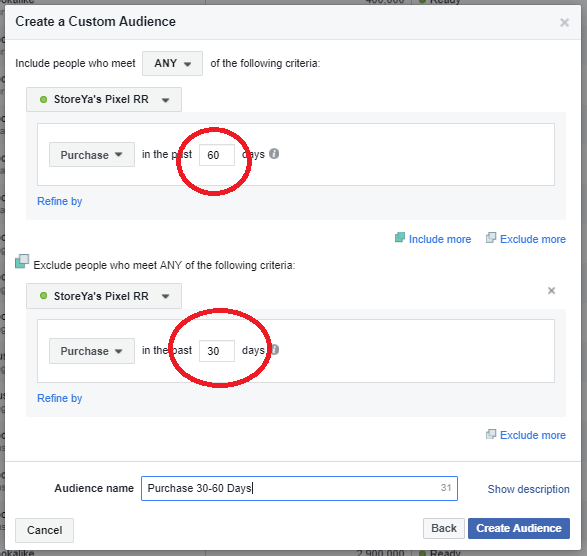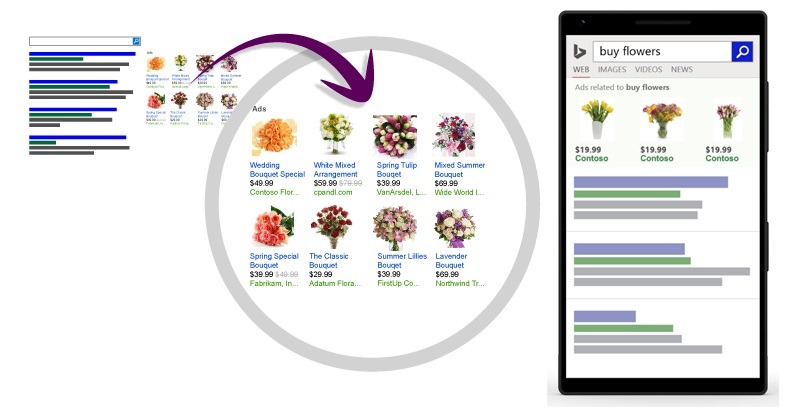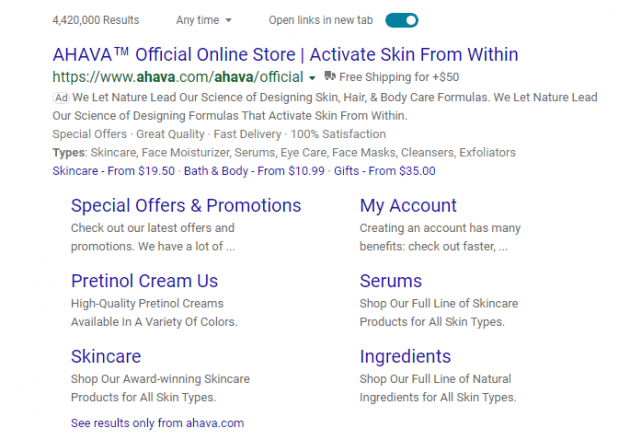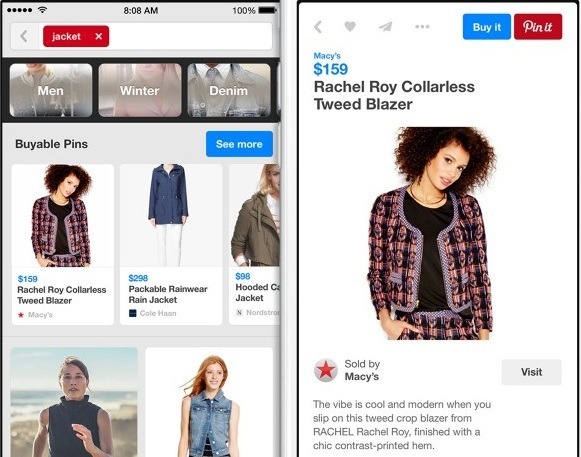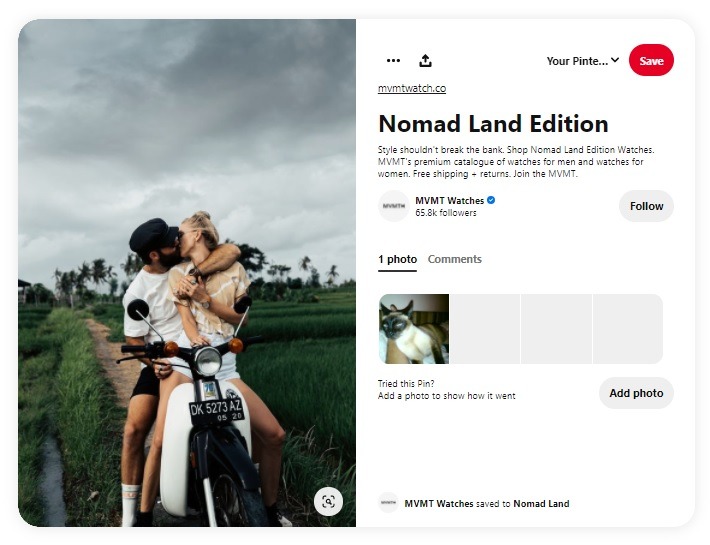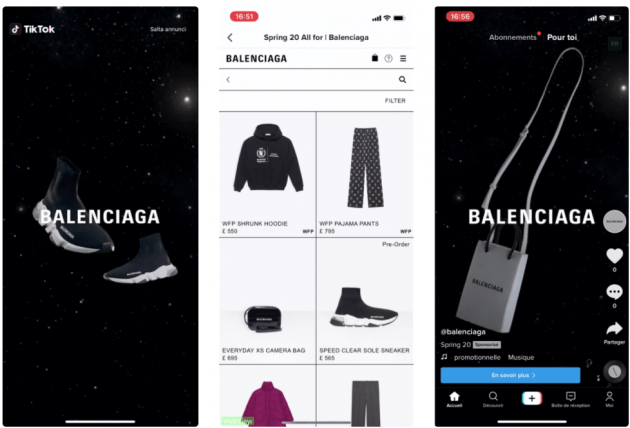Let’s be honest: without traffic, all the effort you put into product development and onsite optimization is utterly pointless.
But you don’t need just any old traffic.
Your store needs highly targeted traffic, the kind that only comes with a well-thought-out and optimized eCommerce ads strategy.
Yes, SEO can drive traffic over time, but for real, continuous growth, getting your eCommerce advertising right is vital.
In this post, we take you and your marketing team through the importance of building a cross-channel eCommerce ad strategy and the steps you need to take your marketing strategy to the pro level. We’ll also provide you with winning eCommerce ad examples and hacks from top experts and brands.
You can jump ahead here:
How to Upgrade eCommerce Ads Marketing Strategy in 5 Steps
But first…
What Is eCommerce Advertising?
eCommerce advertising refers to all on and offline paid content designed to bring traffic to your online store. This includes anything from email marketing and PPC campaigns to social media content marketing, podcasts, affiliate marketing, and TV or radio media. The aim of eCommerce advertising is to drive brand awareness (introduce your store to new shoppers), while also using different channels and advertising campaign types (varying your ad format and targeting) to drive targeted shoppers to your checkout page.
Step #1: Laying the Foundation for an Omnichannel eCommerce Experience
To really compete in your niche, you need to look at your overall marketing strategy as a collection of eCommerce ads with each channel campaign optimized to specific objectives, and all channels working together to reach your overall goal: sales.
But it doesn’t stop with eCommerce advertising. Every aspect of your online store customer experience needs to be adapted for multiple channel journeys.
This means your entire cross-channel eCommerce strategy could need an overhaul.
Why? Because of the quick change in consumer behavior over the last couple of years. Here are three essential stats from key eCommerce consumer studies that back this up:
- According to UC Today, nine out of every 10 consumers want omnichannel service, where they can move between various online channels seamlessly.
- 44% of all companies have adopted a ‘digital-first approach’ when it comes to customer experience.
- According to Google, up to 85% of consumers start their purchasing journey on one device but finish the final transaction on another.
A simple example of this in practice is the rise of BOPIS (buy online, pick up in-store) initiatives which dramatically increased during COVID lockdowns last year.
Many boutiques and retail brands like Dress Up joined the 43.7% of top retailers that already offered BOPIS before the pandemic hit.
Even if you don’t have offline brick-and-mortar locations, you should still be creating a multi-channel experience for your shoppers through a range of online channels.
This will ensure your entire customer journey is multi-dimensional and seamless at every touchpoint and allow shoppers to move between channels and devices easily.
To lay a good foundation for a multi-channel selling strategy, you should be diving deep into your store data to answer these key questions:
- Which channels are bringing in the most traffic, and what percentage of that traffic converts?
- How many steps do my shoppers take before they complete a sale?
- Which channels bring the most inquiries and requests (customer service)?
- Are the devices potential shoppers use to find your store the same as the devices they use to make a purchase?
- Which social media platforms do your shoppers engage with most?
Let’s say you have a growing online clothing boutique. When you take a look at your store data, you find that a Google or Facebook ad brings the most traffic, but that that traffic takes longer to convert (more steps to purchase).
You also find that while Twitter doesn’t bring any store traffic, it’s the top channel your customers use to engage with your customer service.
You could then use this data:
- To spot gaps in your eCommerce ads for those channels like Dynamic product ads or Google Shopping remarketing, which you can then fill with touchpoint-specific campaigns and improved personalization and targeting.
- Move ad spend from Twitter to other more lucrative channels such as Google Shopping, and move Twitter out of marketing and into your customer support management systems.
Step #2: Choose Your Core eCommerce Ads Marketing Channels
We now know the importance of creating an omnichannel customer experience across your entire eCommerce sales funnel. Choosing the right eCommerce ad channels that work seamlessly together will play a vital role in the success of building the right conversion strategy.
Pro Tip: As your eCommerce ads strategy gets more involved, the number of core channels and advertising campaign types will increase.
In order for you or your marketing team to not only manage but optimize your overall strategy and keep flow seamless, you will need to invest in PPC management software and tools.
If you are looking for a more hands-on alternative to WordStream, then check out Traffic Booster.
Bonus Content: AI for eCommerce: The Ultimate Guide
When it comes to eCommerce ads, there are seven core eCommerce digital marketing channels every online store should consider.
Top Sales-Boosting eCommerce Ads Channels
Let’s take a closer look at these digital marketing channels, the types of eCommerce ads they include, and their targeting options.
1. Google Ads for eCommerce
Best-suited for: All eCommerce brands (B2C or B2B)
When it comes to marketing channels and ads, Google Ads for eCommerce is a must for any brand. With a wide variety of campaigns and targeting options, Google is an eCommerce lead-generating tool that can reach potential customers and shoppers at every touchpoint.
The trick is using the right ad type with the right targeting strategy.
Top Google Ads for eCommerce
- Google Display network
- Google Shopping ads
- Smart Google Shopping (Performance Max)
- Google Remarketing Ads
- DSAs (Dynamic Search ads)
- Google Search ads
- YouTube ads
- Google Gallery ads
Google offers a wide range of targeting options for online retailers, including:
- Contextual (keyword) targeting
- Placement targeting
- Topic targeting
- In-market audiences (interest targeting)
- Affinity audiences (interest targeting)
- Demographic targeting
- Shopping behavior retargeting
- Similar Audiences
- Custom intent
Here’s an example of how these targeting options can help you build your eCommerce ads strategy for Google.
Let’s say you have an online pet supply store based in San Francisco, California. You could create Google search campaigns that target “dog clothes” (keyword targeting) and “San Francisco and nearby cities” (location-based targeting.)
You could also target topics based on seasons for your Display ads. For instance, you could add the keyword “buy dog costumes” with the topic “Hobbies & Leisure > Special Occasions > Holidays & Seasonal Events.
An eCommerce brand that understands the power of diversified channels and ads is Moving Beans. They were able to increase their monthly revenue 5x with an optimized eCommerce PPC campaign strategy.
Here are some of their most recent eCommerce Google ads.
2. Facebook Ads for eCommerce
Best-suited for: All eCommerce brands (B2C or B2B)
No winning eCommerce ads strategy would be complete without Facebook. When it comes to Facebook ads for eCommerce, you want to diversify your advertising campaigns and targeting and ensure that your ads work to feed other channels like Google.
Top Facebook Ads for eCommerce
- Dynamic ads
- Collection ads
- Video ads
- Domain ads
- Messenger ads
- Instant Experience ads
- Lead ads
- Carousel ads
- Offer ads
It’s Facebook’s targeting options that make this channel super powerful for online sellers. When used strategically, you can not only reach thousands of new potential customers but convert customers with personalization.
Facebook’s targeting is diverse and include:
- Engagement-behavior targeting
- Geographic targeting
- Demographic targeting
- Behavior targeting
- Interest targeting
- Custom Audiences for new shopper acquisition
- Lookalike Audiences to find similar audiences to existing customers
- Retargeting audiences (Facebook pixel) based on onsite behavior
In short, you will need a mix of social media campaigns targeting different segments to ensure you are hitting every stage of a customer’s journey.
To do this effectively, you should first put effort into upgrading your audiences before reviewing the types of Facebook ads you are using.
Facebook Audience Tweaking
Here are just a few examples of audiences you should be tweaking at various journey touch-points:
- Awareness: Custom Audiences based on Google Analytics data or brand interest and value-based customer lookalike audiences.
- Consideration: Custom Audiences based on web traffic behavior, Facebook/Instagram content engagement, email marketing subscribers, and Google Ads traffic.
- Loyalty building: Custom Audiences based on past purchases and/or shopping frequency.
You can read about how to create these audiences in more detail here.
3. Microsoft Ads for eCommerce
Best-suited for: Global online retailers (B2C or B2B)
Although less dominant than Google, Microsoft Advertising will help you fill in the gaps and create a well-rounded eCommerce ads strategy.
This is especially true when it comes to desktop placement, as Microsoft generates 138 million unique desktop searches per month in the US alone.
Top Microsoft Ads for eCommerce
- Expanded text ads (search)
- Dynamic ads (search)
- Bing Smart Search
- Microsoft Audience Ads (partner sites)
- Multimedia ads (partner sites)
- Responsive search ads
- Microsoft product ads
Although it is a smaller platform, Microsoft ads have many advantages, and when tested with the right audiences or targeting options, they can offer good ROAS.
Here’s an example from online retailer AHAVA, which is seeing 600% ROAS from Microsoft ads.
Microsoft targeting and audiences options best suited for online sellers include:
- LinkedIn profile targeting (B2B)
- Retargeting
- Geographic location targeting
- In-market audiences
- Day of the week or time of day
- Gender and age targeting
- Device-specific targeting
- Product audiences
- Custom and similar audiences
- Microsoft Customer Match
4. Pinterest Ads for eCommerce
Best-suited for: Niche Interest-Based eCommerce brands (B2C)
If your online retail brand sells in the home decor, cooking, fashion, or beauty niches, Pinterest should be on your list of eCommerce ads channels.
Although niche, Pinterest ads for eCommerce can be a powerful addition to your overall marketing strategy for niche products. It can also boost content marketing and SEO efforts.
Top Pinterest Ads for eCommerce
- Story pins
- Promoted Carousel ads
- Video ad pins
- Promoted pins
- Buyable pins (Shop the Look)
If you are going to experiment with Pinterest ads for eCommerce, you will want to vary your targeting. Some Pinterest ads options include:
- Demographic targeting
- Keyword-based targeting
- Interest-based targeting
- Retargeting audiences
- Actalike audiences
- Placement targeting
An eCommerce brand that has a lot of success with Pinterest is MVMT. By uploading their product catalog to Pinterest and combining customer insights with shopping ads and conversion campaigns, they lowered their CPA (cost per acquisition) by 4x.
5. Snapchat Ads for eCommerce
Best-suited for: eCommerce brands whose core markets are millennials and Gen Z users (B2C)
With 78% of U.S. Snapchatters falling into the 18-24 age bracket, to have success with this social media platform, you don’t have a lot of wiggle room in terms of audiences here.
However, Snapchatters hold a whopping $4.4 trillion in global spending power, making it a worthwhile platform to test if your online store targets younger shoppers.
There are four Snapchat campaign types ideal for online retail brands, including collection ads, story, single image (or video ad), and dynamic product ads.
Top Snapchat Ads for eCommerce
- Collection Ads
- Story Ads
- Image or Video Ads
- Dynamic Product Ads
Here are some of the targeting options you can use with Snapchat eCommerce campaigns:
- Demographic targeting
- Interests and behaviors
- Location targeting
- Lookalike audiences
- Ad engagement audiences
- Mobile app audiences
- Snap audience match
- Pixel custom audiences
- Third-party custom audiences
An eCommerce brand that’s having huge success with Snapchat eCommerce ads is Rock ‘Em Socks.
They first used Story Ads, which appear in the discovery section of the Snapchat app, to drive brand awareness.
After this, they created conversion-focused campaigns that drove significant online traffic, product sales, and repeat customers. The results:
- 40% in ROAS
- 5.5x increase in product sales
6. TikTok Ads for eCommerce
Best-suited for: eCommerce brands targeting a younger demographic (B2B)
Another eCommerce ads channel worth testing for younger shoppers is TikTok. TikTok has the potential to reach hundreds of millions of people globally.
However, with 41% of users aged between 16-24, your products need to be a good fit for this demographic to be worth the ad spend.
When it comes to ad types, TikTok ads for eCommerce differ slightly from Snapchat. Some promoted content, such as hashtag challenges, offers more customer interaction than other platforms.
Top TikTok Ads for eCommerce
- TikTok Creator Marketplace
- Brand Takeovers
- Hashtag Challenges
- Branded effects
- TikTok In-Feed Ads
- TopView TikTok Ads
If you want to test TikTok ads for your eCommerce brand, you will want to make sure you and your marketing team are on top of trending music and viral TikTok Videos.
You will also need to Connect Shopify stores to TikTok to use their Shoppable TikTok videos and allow for easier consumer checkout.
Bonus Content: Winning TikTok Video Ideas and Best Practices [+ Examples]
7. Amazon Ads for eCommerce
Best-suited for: All eCommerce brands (B2C or B2B) that are selling on Amazon.
If you’re also selling on Amazon, adding Amazon ads to your overall eCommerce marketing strategy will help ensure you stay competitive in a highly saturated marketplace.
This channel also offers offsite eCommerce ads, similar to how Google’s Display Network and Facebook’s partner site placement works.
Top Amazon Ads for eCommerce
- Amazon Attribution (beta)
- Amazon Live
- Sponsored brands
- Audio ads
- Sponsored display
- Customized advertising experiences.
- Sponsored products
- Video ads
- Amazon Store/Brand
If you’re new to Amazon marketing or selling, then you will want to check out these helpful guides first:
- How to Optimize Your Amazon Advertising
- Pricing Strategies Every Amazon Seller Needs to Know
- How to Increase Your Amazon Seller Feedback Rating
In a nutshell: Determining which campaigns to test and how much budget you allocate to each channel will depend on your specific market, brands, and shoppers, as well as your unique customer journey.
This brings us to the next step: selecting the right eCommerce ads to target fundamental shopping journey touchpoints.
Step #3: Select the Right eCommerce Ad for Key Shopping Journey Touchpoints
The next step in creating a successful eCommerce ad strategy is determining which campaigns and ads you should be running to ensure every shopping journey touchpoint is covered.
This means creating a multi-channel digital marketing strategy that targets these four key buying stages:
- Awareness
- Consideration
- Purchase
- Repurchase
Each of these stages and the campaigns associated with them have their own objectives and KPIs. It is vital that you use the best channels, eCommerce ad types, targeting, and messaging to achieve these goals.
Pro Tip: Let’s Talk eCommerce Ads KPIs
As we know, the KPIs you monitor for awareness or brand recognition are different to how you measure a conversion campaign. Where your brand awareness campaigns are focused on CTRs and impressions, your conversion campaigns will be focused on increasing your CVRs while keeping your CPA (cost per acquisition) down.
This means continuously assessing and monitoring your KPI for each objective is vital in ensuring your overall eCommerce ads strategy is properly optimized for the best ROAS.
You will also need a set of KPIs to measure each digital marketing channel with. For example, with Google Ads, you will want to check these specific KPIs:
- Budget attainment
- CPAs
- CPCs
- Quality Score
- CVRs
- Impression share
- CTRs
- LTVs
- Keyword performance
You can read more about important Google Ads KPIs here.
Additionally, each campaign should be working to feed potential customers and shoppers into the next stage.
There is no one-size-fits-all approach to this. Retail brand marketers will need to tweak and optimize their channels and campaigns to ensure their overall eCommerce ads strategy is working symbiotically.
For example, let’s say you are marketing an online clothing store and are using Facebook and Google Ads for eCommerce. A snippet of your overall eCommerce ads strategy could look a little something like this:
- Awareness: Facebook video ad, with Lookalike Audiences
- Consideration: Google Search, with RSLs and brand name as a keyword
- Repurchase: Smart Google Shopping and Facebook Dynamic Product ads with retargeting/remarketing audiences
Simply put, this multichannel marketing strategy involves using Facebook to reach a broad, cold audience that you would then convert with Google Search campaigns using branded keywords.
The idea is that people actively searching for your brand, after seeing your video ad campaign, have high intent, leading to good ROAS.
There are many strategies like this one, that you can use to ensure you have a winning eCommerce digital marketing plan.
To get you started, here are six pro cross-channel marketing strategies you should be testing.
Step #4: Use Management and Optimization Real-Time Automation to Drive Conversions
If all of this feels like hard work, you’re not alone.
While being able to monitor and optimize your campaigns continuously and your overall store brand KPIs is vital to the success of your eCommerce ad strategy, it is also something many marketers struggle with.
At some point, as your business and eCommerce ads portfolio grows, you can not do this successfully without real-time optimization and management. This is where pro eCommerce ad tools like Traffic Booster come in.
Traffic Booster is an all-in-one PPC management and automation tool and service that combines unique machine learning and AI technology with marketing expertise to create, manage and optimize Google, Facebook, and Instagram ads in real-time. All this ensures you are getting the best results for the lowest possible ad spend.
Here is a list of some of the channels and eCommerce campaigns included:
Best Ads for eCommerce
- Google Shopping and Smart Shopping ads
- Dynamic remarketing ads
- Search & Dynamic Search Ads
- YouTube Shopping & action ads
- Smart display campaigns ads
- Dynamic retargeting ads
- Instagram & Facebook acquisition ads
- Bing, TikTok for eCommerce, Pinterest Ads and more [Enterprise Edition]
You can read about this and other PPC management tools here.
Step #5: Go All-In on Personalization
Last but not least, let’s talk personalization.
In today’s current market, it’s not enough to just segment your audiences into groups. You need to ensure you are personalizing your shopping experience for each and every person who engages with your brand, products, and marketing.
Here are some personalization stats from Forbes to drive home its importance:
- Over 40% of consumers get annoyed with impersonal or generic content
- 71% of consumers experience frustration with impersonal shopping experiences
- According to Statista, 90% of U.S. consumers find personalized marketing very or somewhat appealing
- 91% of shoppers say they are more likely to shop with brands that provide product recommendations or promotions that are relevant specifically to them
Bonus Content: How to Cash In on eCommerce Personalization Trends
In terms of eCommerce ads and the success of your overall digital marketing strategy, personalization is critical.
Think behavioral segmentation.
Instead of just creating campaigns for niche customer groups based on a particular behavior, combine them with dynamic eCommerce product ads. This ensures you can ensure the right customer is seeing the right product (that’s highly relevant to them) at the right time.
This means using pixel-based PPC targeting on Facebook, Instagram, Pinterest, and Google, and using dynamic product campaigns— including your ad creative. This includes:
Personalized eCommerce Ads
Bottom Line: To Continuously Boost Traffic and Sales, You Need a Multi-Channel eCommerce Ads Strategy
As your business grows, so will your campaign portfolio. Social media and PPC management can start to feel like a full-time job, but it’s impossible to get the ROAS without it.
Ultimately, the key to the success of your eCommerce ads lies in ensuring you are using the right channels, campaigns, targeting, ad creative, and personalization, all working together to boost ROAS across your entire strategy. Whether it’s a well-placed collection ad or a dynamic search ad, they should seamlessly fit into your overall customer shopping journey and sales funnel.
Here’s a reminder of how to do just that:
- Lay the foundation for an omnichannel experience
- Choose your core marketing channels
- Select the right eCommerce ad campaigns for key journey touchpoints
- Use real-time automation to manage optimization and drive sales
- Go all-in on personalization
Got eCommerce ads questions? Post them in the comments section below, and our PPC experts will get back to you.

Nicole is a content writer with over sixteen years experience and flair for storytelling. She runs on a healthy dose of caffeine and enthusiasm. When she's not researching the next content trend or creating business content strategies, she's an avid beachgoer, coffee shop junkie and hangs out on LinkedIn.
Recommended articles
 Facebook Ads for eCommerce: 16 Strategies, Examples & Tips
Facebook Ads for eCommerce: 16 Strategies, Examples & Tips
 How to Build a Winning eCommerce Ads Strategy
How to Build a Winning eCommerce Ads Strategy
 Google Ads for eCommerce: Everything You Need to Know
Google Ads for eCommerce: Everything You Need to Know
 10X Your Traffic with PPC Management Software
10X Your Traffic with PPC Management Software
Comments
Powered by Facebook Comments

